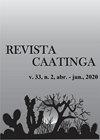基于绵羊胴体形态和完成评分的判别分析
IF 0.9
4区 农林科学
Q3 AGRONOMY
引用次数: 1
摘要
胴体分类包括对具有相似胴体特征的动物进行分组。当组是先验定义的时,就像构象和完成分数的情况一样,我们感兴趣的是确定用于分离组的每个变量的贡献。因此,使用判别分析根据构象和胴体加工得分(得分2=正常,得分3=良好)来区分Santa Inês动物,并确定最有助于区分的变量。构象和胴体精加工分数从1到5不等。这项研究使用了2分和3分,考虑到被评估的动物在这两种不同的量表之间。该数据库由122只未经屠宰的Santa Inês绵羊提交给禁闭制度的信息组成,其中记录了与动物尸体有关的24个变量。数据被提交给Mardia检验以验证多元正态性,然后是非参数k近邻(k-NN)检验。逐步程序选择了一个特定的变量子集,并使用Mahalanobis距离(D2)来评估组的分离(p值0.05)。对胴体构象得分具有最高判别力的变量是冷胴体重量(CCW)、外部胴体长度(ECL)和颈部(NEC),对胴体精加工而言,和胸廓周长(TP)。多元判别分析被证明在将动物分配到其来源组中是有效的。本文章由计算机程序翻译,如有差异,请以英文原文为准。
Discriminant analysis based on sheep carcass conformation and finishing scores
ABSTRACT Carcass classification consists of grouping animals with similar carcass characteristics. When the groups are defined a priori, as in the case of conformation and finishing scores, the interest is to identify the contribution of each variable used in separating the groups. Therefore, discriminant analysis was used to discriminate Santa Inês animals according to the conformation and carcass finishing scores (score 2 = regular, score 3 = good) and to identify the variables that most contribute to the differentiation. The conformation and carcass finishing scores vary from 1 to 5. This study used scores 2 and 3, considering that the evaluated animals ranged between these two respective scales. The database consisted of information from 122 uncastrated Santa Inês sheep submitted to the confinement regime, of which 24 variables related to the carcass of the animals were recorded. Data were submitted to the Mardia test to verify multivariate normality, followed by the nonparametric k-nearest neighbor (k-NN) test. The stepwise procedure selected a particular subset of variables, and the Mahalanobis Distance (D2) was used to assess the separation of groups (p-value ˂ 0.05). The variables with the highest discriminatory power for the carcass conformation scores were cold carcass weight (CCW), external carcass length (ECL), and neck (NEC), for carcass finishing were live weight at slaughter (LWS), ECL, and thoracic perimeter (TP). The multivariate discriminant analysis proved efficient in allocating the animals in their groups of origin.
求助全文
通过发布文献求助,成功后即可免费获取论文全文。
去求助
来源期刊

Revista Caatinga
AGRONOMY-
CiteScore
2.10
自引率
11.10%
发文量
67
审稿时长
6-12 weeks
期刊介绍:
A Revista Caatinga é uma publicação científica que apresenta periodicidade trimestral, publicada pela Pró-Reitoria de Pesquisa e Pós-Graduação da Universidade Federal Rural do Semi-Árido – UFERSA, desde 1976.
Objetiva proporcionar à comunidade científica, publicações de alto nível nas áreas de Ciências Agrárias e Recursos Naturais, disponibilizando, integral e gratuitamente, resultados relevantes das pesquisas publicadas.
 求助内容:
求助内容: 应助结果提醒方式:
应助结果提醒方式:


